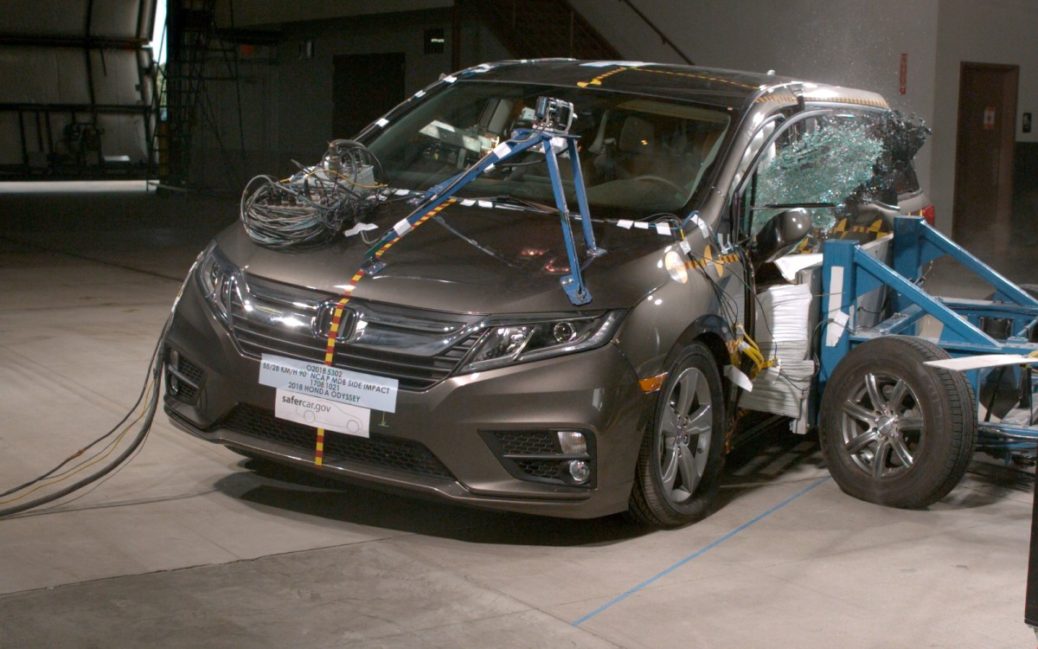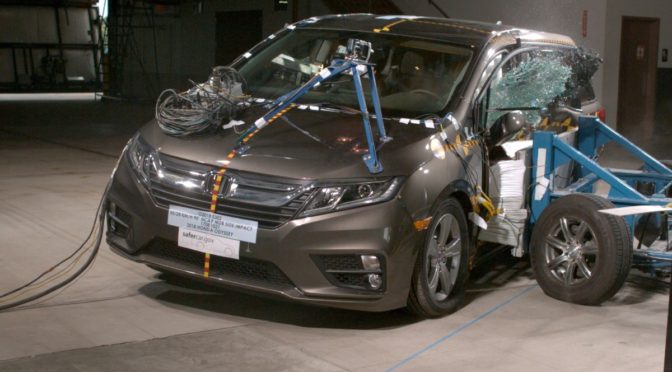
One of the most consistent messages I’ve tried to share on the CCD since its creation has been for the need to identify best practices and execute them without waiting for institutions to acknowledge them. This is a song and dance we see time and time again, such as in our national approach to car seat safety. The American Association of Pediatrics most recently recommended in 2011 rear-facing children until the age of 2, marking a major increase over the 2002 recommendation of doing so until 1. The problem, of course, is that best practices as outlined in Sweden recommend rear-facing until 4 or 5, and have done so for more than 40 years. In other words, our latest policies in car seat safety are still behind where the Swedes were 40 years ago. This, incidentally, is a major part of why we continue to lose about 5 children to auto trauma in the US for each child lost in Sweden. To follow best practices, you can’t wait for your government to learn they exist, never mind to put them into law. Unfortunately, the knowledge and enforcement falls on you. Let’s look at how this applies today to an area of interest of mine: side impact collisions.
Vehicular safety is only a third of the road safety picture, but it’s still worth talking about
The scene is no different when it comes to vehicular safety. Even though it’s only one third of what actually matters in road-related best practices (along with driving behaviors and road infrastructure, which make far more of a difference than vehicular design), it’s still significant. We know that of the three main types of multi-vehicle collisions–frontal, side, and rear–that side impacts have the most severity and are the most likely, crash for crash, to result in fatalities. This is why nearly every article I’ve written on vehicular safety in multi-vehicle contexts has had to do with the vehicles that have tested best in side impact crash mitigation. The theory I developed some years ago was that, while the IIHS’ threshold for a “good” level of structural impact resistance–at least 12.5 cm of space between the B-pillar and the centerline of the driver’s seat after impact with a 3300 lb barrier traveling at 31 mph–was acceptable, it wasn’t enough. I wrote article after article illustrating the leaders in side impact resistance across vehicular classes, from small- and mid-sized cars to station wagons to minivans to SUVs. Here they are below:
- Side Impact Safety: Volkswagen Atlas Safest SUV of 2018
- Side Impact Safety: Honda Odyssey Safest Minivan Again in 2018
- Side Impact Crash Protection: The Safest SUVs and Crossovers (2017)
- Side Impact Crash Protection: What’s the Safest Station Wagon? (2017)
- The safest small SUVs and crossovers for side impact survival (2016).
- The safest family cars for side impact survival (2016).
- The safest minivans for side impact survival (2016).
- The safest small cars for side impact survival (2016).
- The safest cars for side impact survival (2015).
- The safest minivans for side impact survival (2015).
- The safest small cars for side impact survival (2015).
- The safest SUVs and crossovers for side impact survival (2015).
My theories were based on the crashes I’d studied involving side and frontal impacts as well as an understanding of the dramatic increases in kinetic energy present with slightly higher impact speeds (which we’ve also discussed extensively throughout the blog).
What did the IIHS learn about their side impact test?
This is where the IIHS comes in. They noticed (as has anyone paying any amount of attention to crash statistics) that people continue to die in side impact collisions despite increasing market penetration of well-scoring vehicles. While cohesive, long-term solutions would not solely focus on strengthening vehicles but on producing safer drivers and roads that prevented or reduced the risks of side impact collisions, the IIHS, by design, focuses nearly exclusively on vehicle design. On one hand, this severely limits their effectiveness. On the other, every bit of the puzzle helps. This, by the way, is one of the many reasons why it’s so important for them to not hide internal crash data any more than they already do. Here’s what they found:
IIHS researchers conducted another study of real-world side crashes. This time they examined how well each of the test measurements that feed into the ratings correlates with death risk.
The study included 1999-2016 model year passenger vehicles with standard head-protecting side airbags that had been rated by IIHS for side protection. The researchers looked at the rate of driver deaths per left-side crashes for each model. They compared these rates with 10 specific intrusion and dummy injury measures that go into the ratings, finding that each one was correlated with driver death risk in left-side crashes.
For example, the authors estimated that each additional centimeter of B-pillar intrusion was associated with a 3 percent increase in death risk. Each additional millimeter of rib deflection, one of the measures recorded by the dummies in the test, was associated with a 1 percent increase in death risk.
The key part is in blue above. The researchers were simply interested in the validity of the test itself–whether the measures the ratings were based on were related to real-world death risks. They were, but in particular,they also found direct correlations between tested side impact intrusion and risks of death in real-world crashes.
We came to this conclusion several years ago–lower intrusion, greater survival
The annual CCD budget is much smaller than that of the IIHS, as I don’t have an army of insurance companies funding my work. If I did, I’d focus far more on best practices while leaning on the shoulders of giants–Swedish and otherwise–instead of on retesting policies and practices leaders in the field established years ago. However, we are where we are, and the good news is that the IIHS is planning on designing a more stringent test for manufacturers. It’s just worth noting that, as is often the case, you can’t wait for corporations to come to logical conclusions related to public safety and health: if you’ve got access to better information or the ability to generate such information on your own, use it. Share it. By the time the corporations come to the same conclusions, you’ll be around to enjoy them, and more importantly, you’ll have improved the quality of life for a number of people you may never meet but with whom you share this great big world.
What will the IIHS and car manufacturers learn from the new test?
Here’s a look into the future:
If the test is meaningful, most vehicles will fare poorly at first, because it will reflect a more realistic crash environment–the one that leads to all the real world deaths in vehicles with currently good side impact scores. If the test is not meaningful, most vehicles will do well, and we will learn nothing.
This isn’t school. The fact that vehicles pass with flying colors from the start is meaningless if people continue to die in massive numbers. A meaningful test will need to be one that simulates real world conditions. I’d personally like to see a test speed of at least 40 mph–the same speed used in their frontal collision tests–and a vehicular mass of at least 4,000 pounds, which is far more representative of the average SUV, minivan, or pickup on the road than 3,300. They note themselves in a related study that the average 2019 model year SUV weight was 4,200 pounds, which they used in a small series of tests to see if there were differences in how vehicles responded when impacted by real vehicles compared to when they were hit by the test deformable barrier. Incidentally, they discovered there that real vehicles of a given weight produced more damage due to less forgiving (read: stiffer) fronts than the deformable barrier, which acted somewhat like a pillow when impacting the tested vehicles. Clearly, they have more work to do. But the key point to take home regarding the redesigned test is that if it doesn’t represent the types of crashes I write about on the CCD–those at highway speeds with heavy vehicles–it isn’t going to teach us anything or lead to safer vehicles.
Does this mean I need a vehicle that shows up on your lists, Mike?
No, no, no.
Such vehicles are ideal if you can get them, but in the end, this still isn’t what makes the lion’s share of difference in whether you’ll make it home to your loved ones each night. Focus on your driving–how you do it and where you do it. That’s where up to 90% of the results will come from. What you’re driving may make up the last 10%, and I think that’s generous. Remember–in a 70 mph head on collision (whether with another vehicle or with a bridge or home-like barrier), you’re facing 306%, or more than 3 times, the force that your vehicle was designed to protect you from ((70)^2/(40)^2). Statistically speaking, everyone in your car, minivan, SUV, or pickup is going to die. I’ll repeat that once more because it’s such a key point to remember.
No matter what you drive, you won’t survive past a certain collision speed
That speed will vary with a number of factors, but it’s almost always going to be hit by the time you reach 70 mph. It’s often hit at far lower speeds, like at 55 mph. Remember, that’s as severe of a crash as being pushed off a 10th floor parking garage while strapped into your car.
Learn, then follow best practices. Everything else is fluff.
 If you find my information on best practices in car and car seat safety helpful, you can buy my books here or do your shopping through this Amazon link. Canadians can shop here for Canadian purchases. It costs nothing extra to do so, but when you shop through my links, a small portion of your purchase, regardless of what you buy, will go toward the maintenance of The Car Crash Detective.
If you find my information on best practices in car and car seat safety helpful, you can buy my books here or do your shopping through this Amazon link. Canadians can shop here for Canadian purchases. It costs nothing extra to do so, but when you shop through my links, a small portion of your purchase, regardless of what you buy, will go toward the maintenance of The Car Crash Detective.

